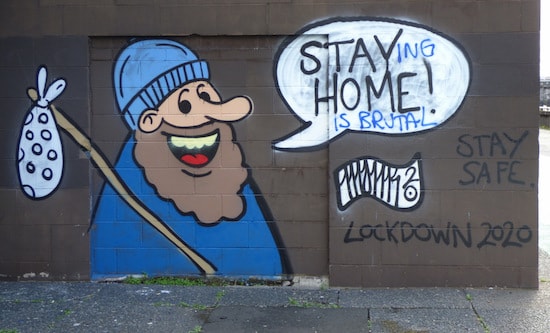
The end of the ban on evictions on 20 September puts tens of thousands of private renters at imminent risk of becoming homeless, a figure that could rise to hundreds of thousands in the coming months. 200 extra judges have been given crash courses in housing law as courts gear up to deal with the backlog of cases. An evictions catastrophe is looming.
With the figures for those in rent arrears having doubled during the pandemic, the District Councils Network, which represents some local authorities, estimates that 500,000 people could be at risk of eviction, with up to 55,000 households in England facing being turfed out of their homes just between 21 September and the end of October. More than 300,000 private tenants have fallen behind on rent since March.
Housing Secretary Robert Jenrick promised that ‘no renter who has lost income due to coronavirus will be forced out of their home.’ He lied. Even while the ban on evictions was in force during the pandemic, an estimated 35,000 people were made homeless; thousands more were ‘asked to leave’ during lockdown (eviction by the backdoor) or faced threats from landlords and letting agents.
Limited concessions mean that landlords must – until March 2021 – give tenants six months’ notice, rather than three – and that evictions will not be carried out over the Christmas period. In areas affected by local lockdowns, bailiffs will not be sent in because of social distancing regulations. But these are cosmetic delays: rent arrears and eviction notices are piling up and the levee is about to break.
Local authorities warn that they are about to be overwhelmed by applications for emergency funding (discretionary hardship payments) by those facing imminent homelessness – applications for the limited funds are already up 30%. Redundancies, reductions in wages, the slashing of hours and mounting debt triggered by the pandemic are all set to engulf larger sections of the population as the furlough scheme tapers off. Evictions have only been postponed, not banned; it is a disaster waiting to happen.
Rise in homelessness
This comes at a time of surging homelessness, exacerbated by the pandemic. There was a 36% year on year increase in alerts by the public about rough sleepers between April and June. Lodgers, ‘sofa-surfers’ and people living with friends and family were not covered by the evictions ban; some tenants were evicted without knowing their rights. Landlords were still able to serve eviction notices, meaning that many people will not benefit from the extended notice period.
Nor did the eviction ban apply to those in temporary accommodation. Inside Housing found that as the pandemic hit, the number of homeless households in temporary accommodation across England jumped by nearly 10% to reach a 14-year high. On 31 March, there were 93,000 households in temporary accommodation including 129,380 children – up 5.3% from 31 December 2019.
Benefits do not cover rent
Around 486,000 households in England and Wales pay more than half their income on rent, including 108,000 lone parents. As well as earnings being eroded there has been a four-year benefit freeze on all working age benefits including housing benefit since 2016. This has led to a massive shortfall between housing benefit and rent payments. In December 2019 this shortfall was on average £113 per month. In January this year, the housing charity Crisis found making up the difference between average weekly rent and housing benefit was leaving the poorest households short of money for food. Despite an increase in housing benefit in March this year, it still does not cover the average rent. The cumulative impact leaves people with no possible way to make ends meet and stave off eviction.
Mark Moncada




